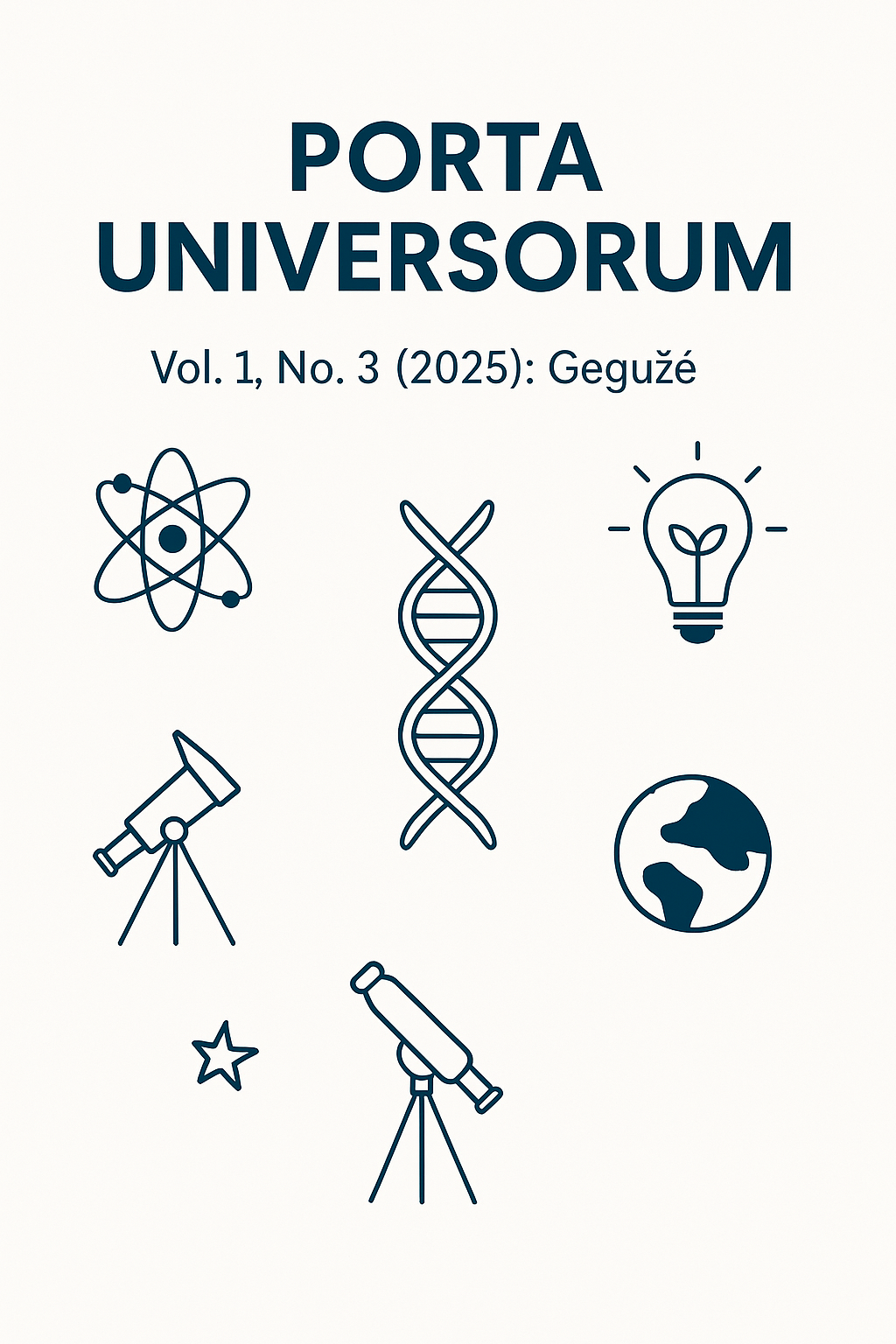Idioms with Animal Components in Azerbaijani and French: A Semantic and Cultural Typology
DOI:
https://doi.org/10.69760/portuni.010314Keywords:
Azerbaijani, French, idioms, phraseology, conceptual metaphor, cultural linguistics, comparative analysisAbstract
This study provides a comparative typological analysis of colloquial idioms containing animal components (zoo-phraseologisms) in Azerbaijani and French. Focusing on semantic, structural, and cultural dimensions, it examines 40–60 idioms (20–30 per language) gathered from dictionaries, corpora, and previous studies. A descriptive, contrastive methodology was employed: idiomatic phrases were identified, translated, and analyzed for literal vs. figurative meaning, syntactic structure, and cultural connotation. Key theoretical frameworks include phraseological typology, conceptual metaphor theory, and cultural linguistics (e.g. Lakoff & Johnson’s metaphor-as-concept, Kövecses 2010). Findings reveal that both languages richly employ animal imagery to express human traits (e.g. courage, cunning, laziness), but they differ in specific motifs and constructions. For example, French avoir un cœur de lion (“to have a lion’s heart” – be brave) parallels universal metaphors of strength, while French être comme chien et chat (“to be like dog and cat” – not getting along) corresponds to Azerbaijani itlə pişik kimi yola getmək. Structural comparisons show differences (e.g. French un paon vs. Azerbaijani tovuzquşu ‘peacock’ – a compound noun) and semantic ones (e.g. pigs and cows bear negative connotations in French, whereas in Azerbaijani these animals are culturally neutral or absent). Both languages anthropomorphize animals to encode traits such as cunning (rusé comme un renard vs. its Azerbaijani counterpart) or cowardice (avoir la chair de poule “to have goosebumps”). Tables categorize idioms by structure (fixed phrase, simile, etc.), semantic field (e.g. bravery, slyness), and underlying metaphors. French idioms often derive from Old World heraldry and fables, whereas Azerbaijani idioms reflect Turkic folklore and Islamic culture (e.g. a “camel” motif in dövəsi ölmüş ərəb). Conceptual metaphor theory explains many parallels (e.g. BRAVERY IS LION), while cultural-linguistic theory accounts for divergences based on ethnocultural worldview. This typological comparison highlights both universal cognitive mappings and culture-specific expressions, offering insights into how Azerbaijani and French speakers conceptualize human qualities through animal imagery. The analysis contributes to comparative phraseology and cultural linguistics by mapping motif correspondences and unique traits across the two languages.
References
Alisoy, H. (2024). Semantic Classification of Phraseological Units. Acta Globalis Humanitatis Et Linguarum, 1(2), 43-55. https://doi.org/10.69760/aghel.01024064
Aliyeva, A. (2023). Contrastive analysis of phraseological combinations used with zoonyms in Azerbaijani and French languages. Norwegian Journal of Development of the International Science, 120, 85–87. https://doi.org/10.5281/zenodo.10138385
Aliyeva, A. (2024). The role of zoonomic elements in French phraseology: A cultural perspective – an in-depth linguistic analysis. Sciences of Europe, (133), 52–56. https://doi.org/10.5281/zenodo.10575573
Asgarova, M. (2024). Linguistic Influences on French: A Historical Perspective on Germanic and English Borrowings. EuroGlobal Journal of Linguistics and Language Education, 1(2), 3-10. https://doi.org/10.69760/zqvnnt03
Asgarova, M., & Sadagat, B. (2025). The Impact of Technological Advances and AI on Linguistic Evolution and Lexical Borrowing. EuroGlobal Journal of Linguistics and Language Education, 2(1), 15-23. https://doi.org/10.69760/egjlle.250002
Babayev , J. (2024). Usage Sphere and Lexico-Stylistic Features of Anthroponomastics. EuroGlobal Journal of Linguistics and Language Education, 1(2), 38-43. https://doi.org/10.69760/gey6sq61
Babayev, J. (2024). Usage Sphere and Recognition Rate of Vulgarisms. Global Spectrum of Research and Humanities , 1(2), 49-54. https://doi.org/10.69760/gsrh.01022024005
Djafarova, D., Yoldashov, N., & Abdurakhmonova, Z. (2022). Socio-cultural memory and its reflection in French phraseology. Journal of Positive School Psychology, 6(5), 2883–2889.
Hajiyeva, B. (2025). Translating Idioms and Slang: Problems, Strategies, and Cultural Implications. Acta Globalis Humanitatis Et Linguarum, 2(2), 284-293. https://doi.org/10.69760/aghel.025002123
KHUDAVERDİYEVA, T. (2023, October). ON CHARACTERISTICS OF EPIC TIME IN MAGICAL AND RELIGIOUS TALES. In Publisher. agency: Proceedings of the 4th International Scientific Conference «Reviews of Modern Science»(October 19-20, 2023). Zürich, Switzerland (p. 178).
Kövecses, Z. (2010). Metaphor: A practical introduction (2nd ed.). Oxford University Press.
Pausé, M.-S. (2017). Modelling French idioms in a lexical network. Studi e Saggi Linguistici, 55(2), 137–155.
Ponterotto, D. (2010). Cross-cultural variation in idiomatic expression: Insights from conceptual metaphor theory and implications for translation studies. In E. Tabakowska, M. Choiński, & Ł. Wiraszka (Eds.), Cognitive Linguistics in Action (pp. 345–370). De Gruyter Mouton.
Sadigova, S. (2024). A comparative analysis of idiomatic expressions in English and Azerbaijani: Cultural and linguistic insights. Acta Globalis Humanitatis et Linguarum, 1(1), 158–164. https://doi.org/10.69760/aghel.024061
Semiyeva, S. (2025). Understanding Collocations in English: Linguistic Nature, Learning Challenges, and Pedagogical Implications. Acta Globalis Humanitatis Et Linguarum, 2(3), 120-125. https://doi.org/10.69760/aghel.0250020017
Tursunova, N. (2025). Stability of Phraseological Units: Structural, Semantic, and Morphological Aspects. Acta Globalis Humanitatis Et Linguarum, 2(3), 59-63. https://doi.org/10.69760/aghel.0250020008
Mammadova, N. (2024). Phraseologisms with a Zoonym Component (Based on Azerbaijani and French Fairy Tales). BEST JOURNAL OF INNOVATION IN SCIENCE, RESEARCH AND DEVELOPMENT, 3(9), 97-102.
Mammad, M. (2014). Comparative analysis of the semantic features of idioms, phraseological phrases, proverbs and sayings in Azerbaijani and English languages and some ways of their translation (Master's thesis, Khazar University (Azerbaijan)).
Pourhossein, S. (2016). Animal Metaphors in Persian and Turkish Roverbs: a Cognitive Linguistic Study.
Maalej, Z. (2001). Of animals, foods, objects, plants, and others, or how women are conceptualized across languages and cultures. In 4th International Conference on researching and applying metaphor (RAAM 4): metaphor, cognition, and culture.
Bakitov, A., Seidikenova, A., & Smagulova, A. (2021). National and cultural features of praise in Kazakh, French and English. Вестник КазНУ. Серия международные отношения и международное право, 93(1), 58-68.
Piirainen, E. (2005). Europeanism, internationalism or something else? Proposal for a cross-lingustic and cross-cultural research project on widespread idioms in Europe and beyond. HERMES-Journal of Language and Communication in Business, (35), 45-75.
Downloads
Published
Issue
Section
License
Copyright (c) 2025 Porta Universorum

This work is licensed under a Creative Commons Attribution-NonCommercial 4.0 International License.
License Terms
All articles published in Porta Universorum are licensed under the Creative Commons Attribution–NonCommercial 4.0 International License (CC BY-NC 4.0). This license permits:
-
Sharing (copying and redistributing the material in any medium or format),
-
Adapting (remixing, transforming, and building upon the material),
-
for non-commercial purposes only,
-
with proper attribution to the original author(s) and source.
Commercial use of the material is not permitted without prior written permission from the publisher.




